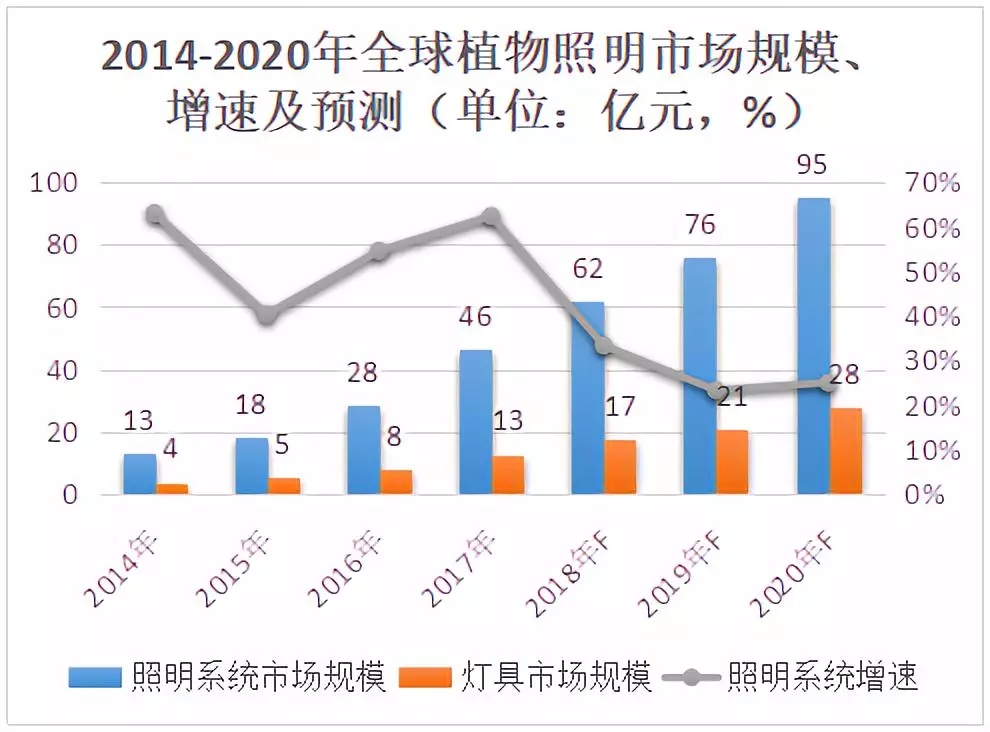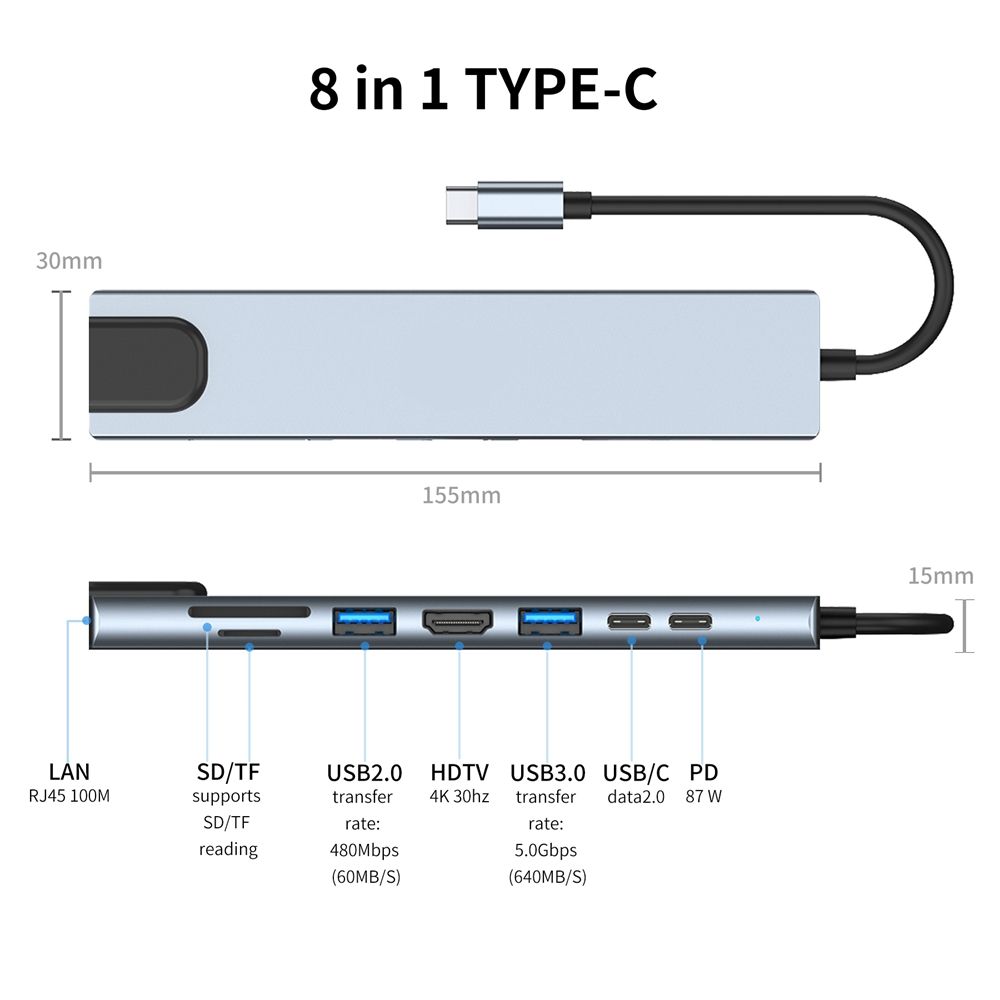LED plant lighting is the product of multidisciplinary and organic combination development of biology, bio-environmental engineering, LED lighting, and intelligent control technology. Since 2013, the output value of global LED application plant lighting has begun to show rapid growth. As an emerging market, plant lighting has attracted a large number of international giants. According to data from the High-Tech Research Institute LED Research Institute (GGII), the global plant lighting market in 2017 was 4.6 billion yuan, a year-on-year increase of 62%. As domestic and international LED giants and e-commerce giants are actively deploying LED plant lighting factories, plant lighting will usher in rapid development. GGII expects that the global LED plant lighting system market size and plant lighting market will reach 6.2 billion yuan and 1.7 billion yuan in 2018. Who is doing? As a new emerging market in the post-lighting market, plant lighting is not competitive due to its high technical threshold. Moreover, the plant lighting market is currently in the cultivation stage, and there is still a large room for development in the future. Therefore, plant lighting is considered to be a big niche market for the LED industry, and vertical enterprises are competing for layout. As a global lighting industry leader, Yannuofei has achieved good results in the field of LED plant lighting. A few days ago, Yannuo also assisted the expansion of Russian fresh vegetable growing company Agro-Inwest. In 2017, Zenofei and Agro-Inwest launched the world's largest LED horticultural lighting project. The scale of the project demonstrates the leadership of Zenofei in the field of horticultural lighting. OSRAM is also a leader in the plant lighting industry. Through continuous acquisition of international high-quality related assets and its own advantages in the field of light source, OSRAM is attempting to create a “big Mac†in the field of plant lighting. A few days ago, OSRAM provided the United States National Aeronautics and Space Administration (NASA) with a number of specially designed interconnected plant lighting research systems Phytofy RL. This can reflect the absolute advantage of OSRAM in this field. Of course, including Samsung, Cree, etc. are also actively deployed, and launched the corresponding systems and products. Aside from these international giants, we focus on the domestic market. As a country with relatively mature development of the plant lighting industry chain, what are the enterprises in the layout? Sanan Optoelectronics is a “squatter†in the field of plant lighting in China. In 2016, it has built a plant of 60,000 square meters and plans to build a plant with an area of ​​500,000 square meters in the future. This plant factory combines the leading LED spectroscopy technology of Sanan Optoelectronics with the scientific research achievements of the Chinese Academy of Sciences in the field of botany. Guangmingyuan has more than ten years of lighting experience in the field of plant lighting, and is supported by the practical experience of plant factories. Therefore, all light formulas are verified by practice, high performance, and have a competitive advantage in cost. In recent years, Hongli Zhihui is actively deploying the market segment of plant lighting. Previously, its self-developed C3535 series products have the characteristics of full-band, high power, high reliability and flexible design, and are the preferred light source for plant lighting. The series of plant lamp beads can be customized according to different plants, different use environments, different growth stages, suitable for plant growth optical ratio, to supplement the plant photosynthesis with sufficient specific spectrum to ensure the healthy growth of plants. In addition, domestic giants such as JD, BOE, and Hon Hai, and LED giants are also actively building plant factories to promote the development of plant lighting. In June 2017, Jingdong and Mitsubishi Chemical will build plant factories in Beijing, Shanghai and Guangzhou; BOE will build a 4,500-square-meter plant in Daxing, Beijing, and supply it to Taifanji, Haidilao, and private houses. Foxconn, a subsidiary of Hon Hai, used the old factory space to build the world's largest plant factory, using LED lighting, culture fluid and other technologies to grow indoors. It can be seen that with the increasing heat of plant factories and plant lighting, not only LED companies have moved, but more and more other industry giants have entered the border. I believe that in the future, plant lighting will usher in a truly leap-forward development. Where is it difficult? For plant lighting, there are still many difficulties. First of all, the multidisciplinary nature of plant lighting determines the difficulty of technological breakthroughs. The biological field is a very important part of plant lighting. Its development requires close cooperation between experts in the field of lighting and experts in biology. However, agricultural LED research talents (science and education units, enterprise level) are extremely scarce, which also restricts the development speed of plant lighting to a certain extent. In addition, the factors that need to be studied in plant lighting are complex and diverse. It is necessary to study not only the changes in air, water, seeds, soil, and surrounding environment such as temperature, humidity, and climate, but also the spectrum, intensity, time and period of illumination, and the form of light (steady state or pulse). In plant lighting research, the interaction between various possible conditions will complicate research issues. Furthermore, the experiment of plant lighting research is difficult, which also hinders the breakthrough of technology. There are too many variables in the experiment, not only to consider the changes in the illumination conditions of different growth stages of the plant, but also to consider other climate variables. Therefore, for plant lighting experiments, there are many samples that need to be tested, and the test time span is very long. Plant lighting lighting has become a time-consuming, laborious, and space-consuming study. Finally, the evaluation criteria for plant lighting are diverse and complex. For plant lighting, many indicators including the production status of plants, sugar and chlorophyll content have increased the difficulty of research. At present, customers are in the stage of tentative exploration, and most of them are pre-verified. The downstream business model is not very certain. There are not many commercial products that operate large-scale commercial plant factories, horticultural plantations, or community-based family-type schools. In this respect, the plant lighting enterprises have invested heavily and the return period is slow, which gradually loses the power of R&D and production. On the other hand, this also makes the samples for the lighting companies not enough, and the technological breakthroughs are slow. In addition, cost price and industrialization are also bottlenecks in the application and promotion of LED light sources in the field of plants. Wang Gaoyang, deputy general manager of Hongli Zhihui, said that the current LED plant lamp market is still in its infancy. The lamps used in the field of plant growth not only have high cost, low light penetration ability, but also product clutter. Production design is not standardized, lack of uniform quality standards and other issues. How to do? Although plant factories and plant lighting have been favored by the majority of manufacturers, it seems that most of the plant factories still have not found their own profit model, and its disproportionate input and output has seriously hindered its development. However, plant plants are one of the largest applications of plant lighting, and the degree of marketization of plant factories directly determines the speed of plant lighting. Where is the breakthrough of LED plant lighting breaking through the existing development bottleneck? Lei Wei, general manager of Guangzhou Lihao Lighting, believes that high value-added planting can break the LED plant lighting market. Through these advanced markets, the market is relatively large, such as greenhouse seedlings and greenhouse cultivation. These will create a virtuous circle and quickly develop LED plant lighting. It is difficult for plant factories to focus on low-value-added industries such as vegetable growing, and it is difficult to increase their profitability. In addition, from the perspective of lighting itself, plant lighting is a systematic interdisciplinary subject. First of all, we must plant from the top agricultural plants, such as plant experts, or university professors, through their understanding of plant information, to propose a different plant Which band or spectral formula is the most suitable, this should be the most basic research on plant lighting. That is to say, the light source and lighting products cannot be “sole alone†or “on paper†and should be closely integrated with agriculture. Therefore, developing plant lighting is not just a matter of making a light source so simple. Shenzhen Avatar Optoelectronics said that the company will have special personnel to go abroad to inspect and understand the demand for LED plant lighting products in overseas markets. We will develop and design different plant lighting sources according to different usage environments. In general, plant lighting is a cross-disciplinary discipline between lighting and agriculture. It is not enough to rely solely on lighting companies to promote the development of the industry. Plant lighting should be better coordinated and coordinated in all areas and links of the plant lighting industry chain. Type-C interface has strong expansion ability, can transmit video and video signals, expand to a variety of audio and video output interface, such as HDMI, VGA, DVI interface, and even achieve 4K resolution of the extended transmission. The Type-c interface provides bidirectional power supply, which can charge the device itself or power external devices.USB HUBS has better data transmission capability and higher charging power. USBType-C went into mass production in August 2014, using the 3.1 standard. Compared with the interface of USB2.0 used in early smartphones, the transmission speed is improved a lot, and the maximum data transmission speed can reach 10Gbit/ s. And type-c supports USB-PD power supply standard, the maximum power supply can be up to 100 watts. Different from the traditional USBType-A and Type-B interfaces, the new Type-C interface is slimmed down in size to 8.3*2.5mm, which is more suitable for use in increasingly miniaturized electronic devices.
Supports positive and negative insertion. 100% of the players who use USB interface have encountered the embarrassment of "the positive plug is wrong, the negative plug is wrong, and the positive plug is right". Because USB-C IS POSITIVE AND NEGATIVE CAN be inserted, professional point is to say that the interface does not have directionality, with much more convenient. type-c charging port, support PD fast charging protocol, can be charged while using the computer, not afraid of running out of power. HDMI interface, I like HDMI to support audio and video transmission, high resolution support 4K/2K. Interface is common, LCD TV, monitor, projector are generally also some (like to connect to TV, audio and video synchronous transmission).vga interface, this is a very common interface, most of the projector, monitor have this interface, can be connected to vga line use, support 1080P resolution. Gigabit network port, although now almost everywhere there is a wireless network, but sometimes it is not enough for you, such as playing games, the network speed is slow, delay. And then he dropped the line right in the middle of his victory. So if you have a network cable and you can connect directly to the Internet, it's great to support gigabit networks.
Type C Usb Hub,Fast Charging Usb Hub,Hub Type C To Usb,Usb 3.1 Type C Hub Henan Yijiao Trading Co., Ltd , https://www.yjusbhubs.com


May 06, 2023